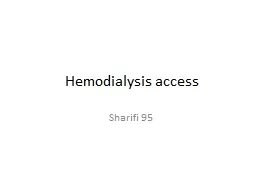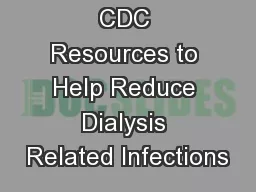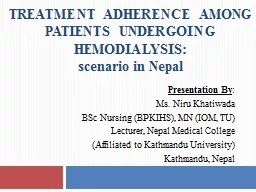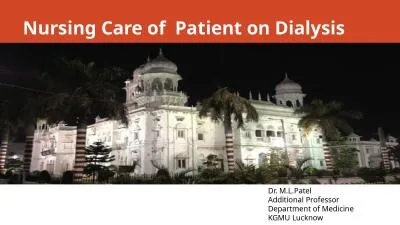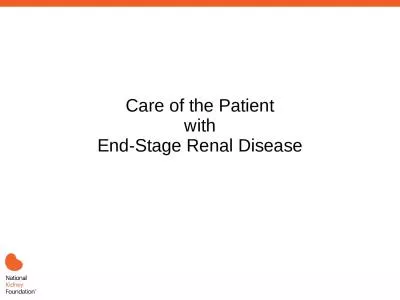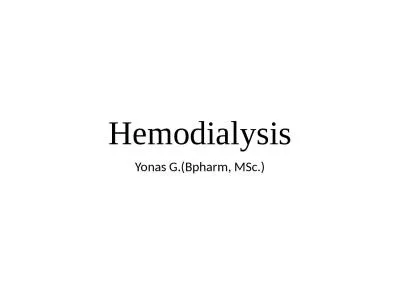PPT-Hemodialysis access Sharifi
Author : tatiana-dople | Published Date : 2020-04-02
95 Hemodialysis access Irene Turnbull 1312007 Hemodialysis access The number of patients with endstage renal disease ESRD in the United States has increased steadily
Presentation Embed Code
Download Presentation
Download Presentation The PPT/PDF document " Hemodialysis access Sharifi" is the property of its rightful owner. Permission is granted to download and print the materials on this website for personal, non-commercial use only, and to display it on your personal computer provided you do not modify the materials and that you retain all copyright notices contained in the materials. By downloading content from our website, you accept the terms of this agreement.
Hemodialysis access Sharifi: Transcript
Download Rules Of Document
" Hemodialysis access Sharifi"The content belongs to its owner. You may download and print it for personal use, without modification, and keep all copyright notices. By downloading, you agree to these terms.
Related Documents

